It has been more than two weeks now since I got back from Japan, but I still have quite a few topics I would like to present on this blog.
Here is one of them: traditional Japanese dyeing, as you can experience it near Nara.
We went there with our friend Shiho, and because of this, I have to admit I did not quite pay attention to the exact location of the place we went to.
Maybe if she comes here and reads this, she will be able to leave a comment and give more details, in case you would like to go too.
The first step is to think about the design you want to create. You start with a white piece cloth, and it is by preventing parts of it from being in contact with the dye (and therefore becoming blue), that the design appears. To isolate textile from the dye, you can fold it and use clothes-pin (to create dots, flowers, etc.), or use the soft plastic cases containing photographic films. With the latter, you can create circles.
Here is one of them: traditional Japanese dyeing, as you can experience it near Nara.
We went there with our friend Shiho, and because of this, I have to admit I did not quite pay attention to the exact location of the place we went to.
Maybe if she comes here and reads this, she will be able to leave a comment and give more details, in case you would like to go too.
The first step is to think about the design you want to create. You start with a white piece cloth, and it is by preventing parts of it from being in contact with the dye (and therefore becoming blue), that the design appears. To isolate textile from the dye, you can fold it and use clothes-pin (to create dots, flowers, etc.), or use the soft plastic cases containing photographic films. With the latter, you can create circles.
Once your design is ready, you have to get yourself ready too! You would not want to be dyed too!
You are now finally ready to start the actual dyeing process. You have to put your cloth into the dye for about a minute, and then rinse with clear water. You repeat this process several times. In between each "bath", you may want to remove some of the pins and cases, in order to get different levels of blue.
Once your done, put your cloth in a vinegar bath outside. This is to prevent the dye from "bleeding" afterwards. After a few minutes, rinse.
Well done! You now are a true specialist of traditional Japanese dyeing.
I really recommend trying this. It was very enjoyable and very interesting too!
I really recommend trying this. It was very enjoyable and very interesting too!
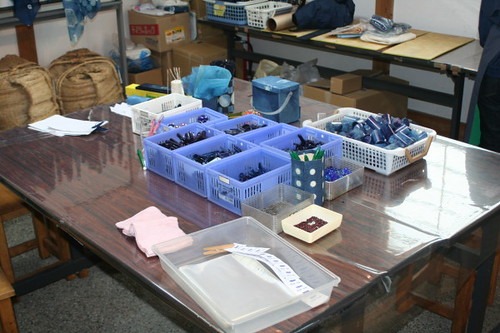
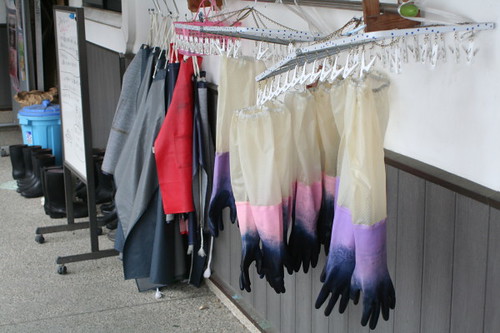
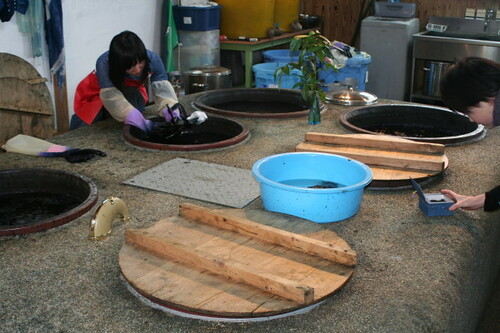
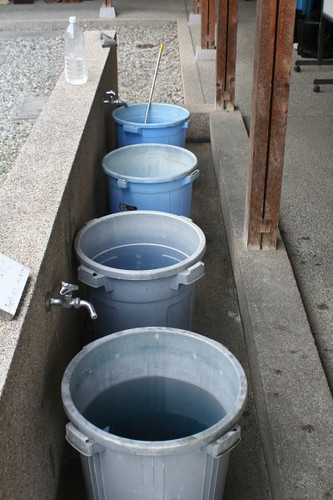
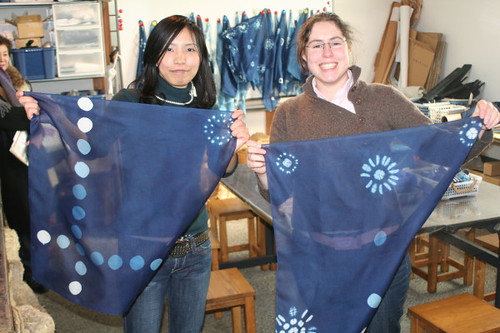



3 comments:
We also had a LOT of fun doing it!! :D
I came here, so I was looking for Info of "Konya" (name of place).
This is Konya's site.
there is info in Japanese and a little English.
http://www.hakomoto.com/
I also had a lot of fun it.
It is Japanese traditional thing.
But I have never tried it before.
I could have great time here ^^
Thanks a lot for the link, Shiho!
The website has details, maps and prices, so this is perfect for anyone who would want to go too.
Post a Comment